 The Basics. Digitalization is disruptive. It is transformative. In defense matters it is here to stay but has some way to go. Why? Its creators are young who do not know about defense. Its users are old who do not understand digitalization. When this twain starts to meet some reality will set in.Let me amplify. Did you know that a modern day passenger aircraft by cost has 50% digital content! Think about it. How many aspects of flight travel and flying are digitalized? That is happening in defense matters also. Digitalization is impacting operations, logistics, training, and administration in a significant manner. Designing and manufacturing of defense equipment is undergoing a major shift.
The Basics. Digitalization is disruptive. It is transformative. In defense matters it is here to stay but has some way to go. Why? Its creators are young who do not know about defense. Its users are old who do not understand digitalization. When this twain starts to meet some reality will set in.Let me amplify. Did you know that a modern day passenger aircraft by cost has 50% digital content! Think about it. How many aspects of flight travel and flying are digitalized? That is happening in defense matters also. Digitalization is impacting operations, logistics, training, and administration in a significant manner. Designing and manufacturing of defense equipment is undergoing a major shift.
Outcome of Digitalization. At the core, digitalization is about vastly enhanced computing and communicating powers and adapting it to different applications in different forms. We need to understand the entire canvas which is loosely called Digitalisation. Otherwise we will face two consequences. Firstly, we will remain archaic when our adversaries are digitally transforming and becoming more lethal. Secondly, we will pay through our noses since digitalization is a costly affair. At the outset let me summarize the outcome of digitalization. Digitalization will promote lethality in a multidimensional battlefield where simultaneous and nonlinear application of optimum force to achieve out of proportion outcomes will have be the order of the day. So, let us understand this beast- Digitalization of Defense, in as simplistic manner as possible as to what it encompasses and how do we handle it.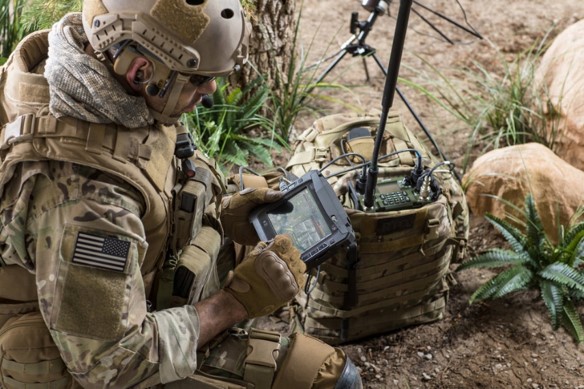
Communications. Digitalization of communications is easy to understand, and a good start point. Communications, the lifeblood of a battlefield, enable better command and control and situational awareness at all levels, so that they act as one. Digitalization has revolutionized battlefield communication beyond imagination. It has miniaturized powerful communication devices into handheld / backpack systems (as can be seen above). Look at your smart phone and everything is easy to understand. Communication is the heart of the matter in defense transformation. 5G is the latest trick. Why? 5G can support up to a million devices per square kilometer, while 4G supports only 4000 devices per square kilometer. That is the difference. it is largely based on MMW and Fiber optic carriageways of enormous bandwidth. It is all set to disrupt military communication. Read up on 5G otherwise you will remain a han ji (हाँ जी )!
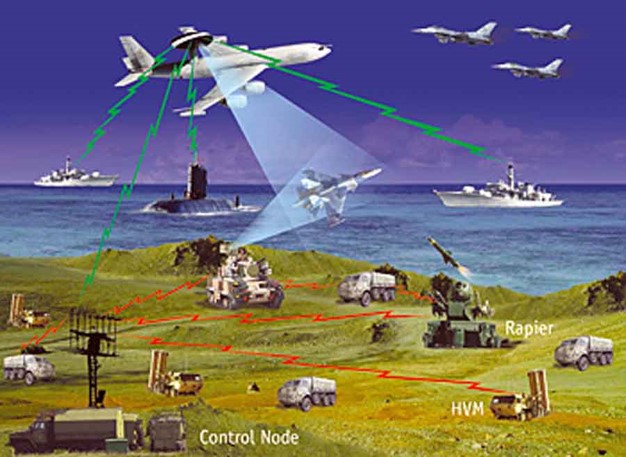 Net Centricity. With the roll out of Artillery Combat Command and Control System and Battlefield Surveillance System in the Indian Army, the concept of Net Centricity is reasonably well understood by most of us. The integrative power of net centric operations is awesome. It enables seamless horizontal and vertical integration of all elements of force to make the battlefield seem flat. This is going to get even more awesome with incorporation of latest digital technologies. We had a glimpse of it in the air operations during our skirmish with Pakistan. However, we are still not mentally equipped to exploit it specially in the Indian Army. As a result, we lag. Net Centricity represents the heart of operational digitalization. Firepower, Surveillance, Intelligence, C&R, Operations and Logistics are all adaptable to net centricity. Netcentric Operations can be carried out either on secure/dedicated nets or on open source networks.
Net Centricity. With the roll out of Artillery Combat Command and Control System and Battlefield Surveillance System in the Indian Army, the concept of Net Centricity is reasonably well understood by most of us. The integrative power of net centric operations is awesome. It enables seamless horizontal and vertical integration of all elements of force to make the battlefield seem flat. This is going to get even more awesome with incorporation of latest digital technologies. We had a glimpse of it in the air operations during our skirmish with Pakistan. However, we are still not mentally equipped to exploit it specially in the Indian Army. As a result, we lag. Net Centricity represents the heart of operational digitalization. Firepower, Surveillance, Intelligence, C&R, Operations and Logistics are all adaptable to net centricity. Netcentric Operations can be carried out either on secure/dedicated nets or on open source networks.
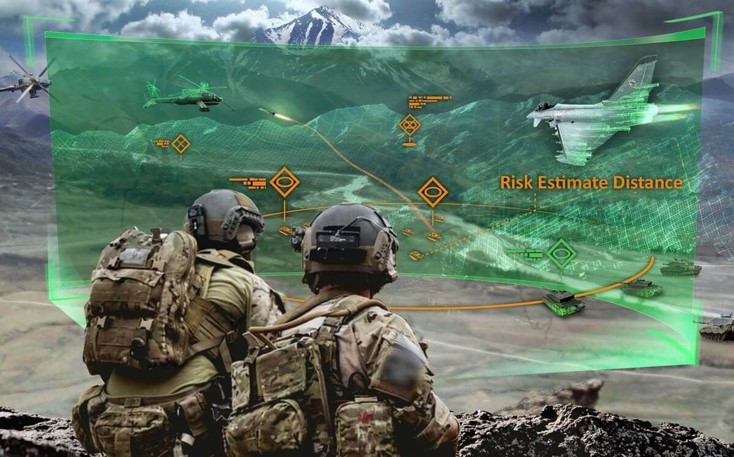 Augmented Reality (AR). Virtual reality replaced the user’s real-world environment and experience. It was the forerunner of AR. In AR, the real world is altered/ modified by computer generated perceptions. The overall experience could be additive/constructive or subtractive/destructive to the actuality. It incorporates audio, visual, olfactory, gustatory and somatosensory senses. AR based simulation will find tremendous use in training and logistics through simulation. In future AR can even lead to portable multidimensional Command Centers. Will AR be used in actual operations? Not at present. When combined with AI, there are operational possibilities beyond wargaming in future. Application of AR in manufacturing and maintenance will be huge specially where precision and detail is needed repetitively. Overall it will lead to tremendous savings where precision engineering is required.
Augmented Reality (AR). Virtual reality replaced the user’s real-world environment and experience. It was the forerunner of AR. In AR, the real world is altered/ modified by computer generated perceptions. The overall experience could be additive/constructive or subtractive/destructive to the actuality. It incorporates audio, visual, olfactory, gustatory and somatosensory senses. AR based simulation will find tremendous use in training and logistics through simulation. In future AR can even lead to portable multidimensional Command Centers. Will AR be used in actual operations? Not at present. When combined with AI, there are operational possibilities beyond wargaming in future. Application of AR in manufacturing and maintenance will be huge specially where precision and detail is needed repetitively. Overall it will lead to tremendous savings where precision engineering is required.
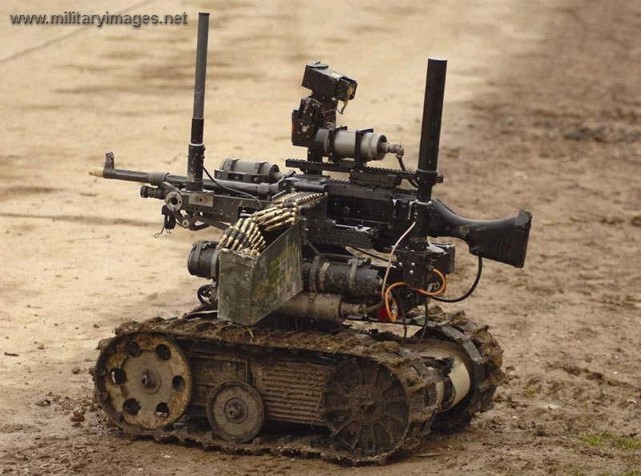 Robotics. Utility of robotics is only going to increase as computing powers and communication speeds increase. We are seeing the explosion of robotics through unmanned aerial systems like drones and swarm technologies. Transfer this to the ground and underwater domain. One sees the field expanding geometrically. Robotics embedded with AI will spew a whole generation of unmanned operational systems. In many cases we will see either reduction of crews in for the same effect or enhancement of effect for the same crew. Use of robotics in operational maintenance and logistics has huge potential. Robotics in Manufacturing, Designing, Healthcare, Maintenance and many other fields is well established and will only grow.
Robotics. Utility of robotics is only going to increase as computing powers and communication speeds increase. We are seeing the explosion of robotics through unmanned aerial systems like drones and swarm technologies. Transfer this to the ground and underwater domain. One sees the field expanding geometrically. Robotics embedded with AI will spew a whole generation of unmanned operational systems. In many cases we will see either reduction of crews in for the same effect or enhancement of effect for the same crew. Use of robotics in operational maintenance and logistics has huge potential. Robotics in Manufacturing, Designing, Healthcare, Maintenance and many other fields is well established and will only grow.
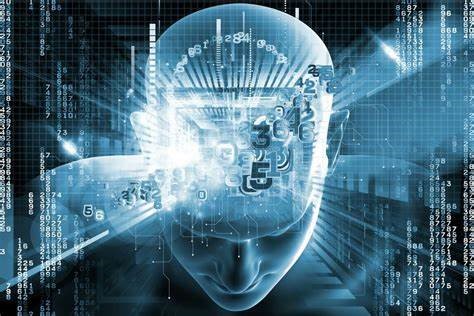 Artificial Intelligence (AI). AI is all about machines mimicking cognitive functions of the human mind such as learning and problem solving leading to decision making. Come what may the human mind might not be replaceable in matters pertaining to defense and operational planning. However, AI will be a great aid in decision making since it has the great ability of predictive thinking and throwing up options to aid decision makers. Additionally, AI will be a built-in partner for Robotics, Net Centricity, AR, Big Data Analysis, Sensors and so on. As days pass, AI will only expand its footprint in defense matters. In any case all autonomous weapon systems will have a great amount of AI built into them. AI based change detection is going to disrupt costly sensors. Use of AI sensibly in functions related to Intelligence, logistics, Administration will facilitate better operations. Use of AI in weapon design, modelling, testing and manufacture has great scope. The major danger of AI is that the output is only as good as the input. Hence to develop sound logic and establish predictable behavioral patterns, there must be uninterrupted repetitive input streams.
Artificial Intelligence (AI). AI is all about machines mimicking cognitive functions of the human mind such as learning and problem solving leading to decision making. Come what may the human mind might not be replaceable in matters pertaining to defense and operational planning. However, AI will be a great aid in decision making since it has the great ability of predictive thinking and throwing up options to aid decision makers. Additionally, AI will be a built-in partner for Robotics, Net Centricity, AR, Big Data Analysis, Sensors and so on. As days pass, AI will only expand its footprint in defense matters. In any case all autonomous weapon systems will have a great amount of AI built into them. AI based change detection is going to disrupt costly sensors. Use of AI sensibly in functions related to Intelligence, logistics, Administration will facilitate better operations. Use of AI in weapon design, modelling, testing and manufacture has great scope. The major danger of AI is that the output is only as good as the input. Hence to develop sound logic and establish predictable behavioral patterns, there must be uninterrupted repetitive input streams.
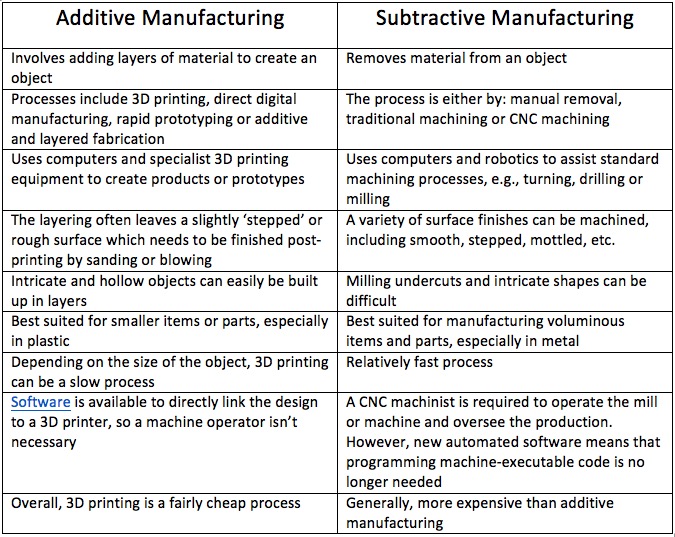 Additive Manufacturing (AM). AM encompasses a set of technologies that build 3D objects by adding layer-upon-layer of material, whether the material is plastic, metal, concrete or one day……human tissue. This contrasts with most manufacturing processes which are subtractive in nature like drilling, machine and so on. It encompasses many technologies including subsets like 3D Printing, Rapid Prototyping (RP), Direct Digital Manufacturing (DDM), layered manufacturing and additive fabrication. AM is being used to fabricate products/parts of complicated designs of high precision in aircraft, dental restorations, medical implants, automobiles, and
Additive Manufacturing (AM). AM encompasses a set of technologies that build 3D objects by adding layer-upon-layer of material, whether the material is plastic, metal, concrete or one day……human tissue. This contrasts with most manufacturing processes which are subtractive in nature like drilling, machine and so on. It encompasses many technologies including subsets like 3D Printing, Rapid Prototyping (RP), Direct Digital Manufacturing (DDM), layered manufacturing and additive fabrication. AM is being used to fabricate products/parts of complicated designs of high precision in aircraft, dental restorations, medical implants, automobiles, and  even fashion products. There are many processes in AM. Each is utilized for a particular purpose or end effect based on the material used. It is only a matter of time that this technology is used in manufacture of complex weapons.
even fashion products. There are many processes in AM. Each is utilized for a particular purpose or end effect based on the material used. It is only a matter of time that this technology is used in manufacture of complex weapons.
Big Data Analytics. This is all about collating diverse data, flowing in large volumes, which is otherwise unintelligible and analyzing it to convert it into something logical by establishing patterns or co-relationships within in the data. It encompasses five terms/attributes of big data – volume, variety, velocity, veracity (noise in the data) and value. Hence big data analytics and AI have a seminal relationship. Very useful in intelligence-based operations of strategic nature. I would like to see someone apply Big Data Analytics with 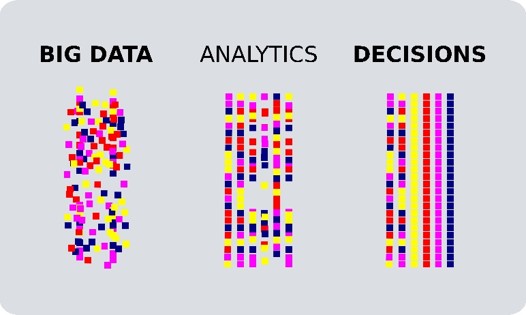 AI to predict the future of Pakistan based on diverse data pertaining to its stuttering economy, water scarcity, agricultural problems, population,
AI to predict the future of Pakistan based on diverse data pertaining to its stuttering economy, water scarcity, agricultural problems, population,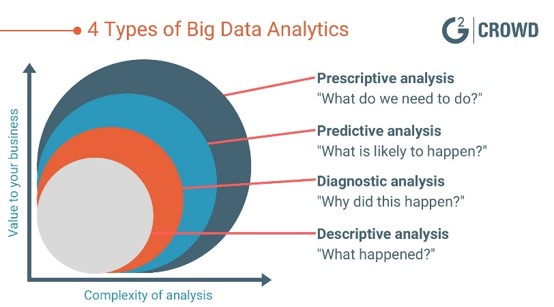 thriving military economy and jihadism. Outcomes will be interesting. Got the drift of Big Data Analytics?
thriving military economy and jihadism. Outcomes will be interesting. Got the drift of Big Data Analytics?
Blockchain. Thomas Friedman’s concept of the World is Flat extended into the virtual world is Blockchain technology. Block chain is all about decentralization, transparency and immutability. The figure above explains the concept broadly. Most importantly, blockchain technology destroys hierarchy. Surprisingly while all server based civilian systems are very centralized,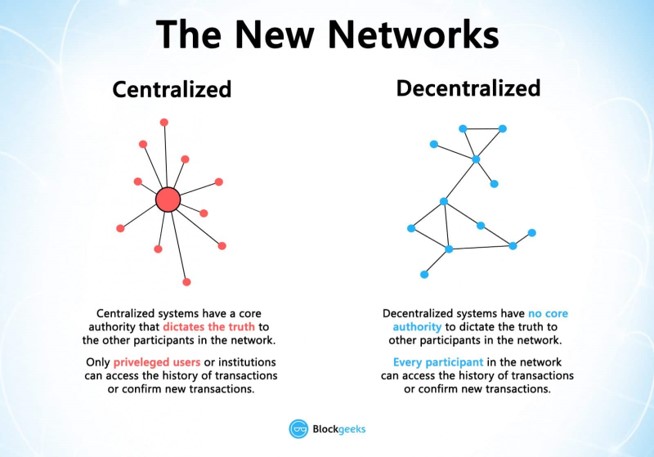 net centric operations are the most akin to blockchains. If the military does the mental shift, the opportunities are exciting. It is my guess that Non-State Actors will be the early birds to adopt this technology for operations. They are already operating in a highly decentralized and transparent mode (to each other). They have to just factor in immutability.
net centric operations are the most akin to blockchains. If the military does the mental shift, the opportunities are exciting. It is my guess that Non-State Actors will be the early birds to adopt this technology for operations. They are already operating in a highly decentralized and transparent mode (to each other). They have to just factor in immutability.
 Spatial Digitalization. In my view digitalization of spatial technologies enhances the efficacy of all spatial locational systems wherever they are used from. Seamlessness in transfer of locational data from ground to space and from stationery to moving objects through digital technologies has already spawned a new set of smart and intelligent weapon systems. Any smart system must have a heavy dose of digitalized spatial element. As Fiber Optic Gyro (FOG) technology becomes more widespread the locational ability and precision of weapon systems will be more enhanced. The possibilities are limitless.
Spatial Digitalization. In my view digitalization of spatial technologies enhances the efficacy of all spatial locational systems wherever they are used from. Seamlessness in transfer of locational data from ground to space and from stationery to moving objects through digital technologies has already spawned a new set of smart and intelligent weapon systems. Any smart system must have a heavy dose of digitalized spatial element. As Fiber Optic Gyro (FOG) technology becomes more widespread the locational ability and precision of weapon systems will be more enhanced. The possibilities are limitless.
 Cyber Security. As digitalization increases in volume, scope and pace, the requirement of cybersecurity will get enhanced. Smart weapons and capabilities will have to be protected from Cyber-attacks even if they are operated on standalone basis. The aim would be to enter the cyber brain and heart of smart systems to decapitate them. Similarly, one must develop Cyber-attack capabilities to nullify the adversary’s advantage. A family tree akin to the model of Electronic Warfare and its counter/support measures is set to evolve.
Cyber Security. As digitalization increases in volume, scope and pace, the requirement of cybersecurity will get enhanced. Smart weapons and capabilities will have to be protected from Cyber-attacks even if they are operated on standalone basis. The aim would be to enter the cyber brain and heart of smart systems to decapitate them. Similarly, one must develop Cyber-attack capabilities to nullify the adversary’s advantage. A family tree akin to the model of Electronic Warfare and its counter/support measures is set to evolve.
Internet of Things (IOT). Internet of things is the next big thing in a Digitalized Defense world. The best way to understand IOT in Defense is to think of four (or more) robotic systems with embedded software interacting with each other for a task-oriented purpose and an outcome on a network. IOT, when fully evolved, will be the mother of digitalization. Some or all the above technologies will form part of the IOT system.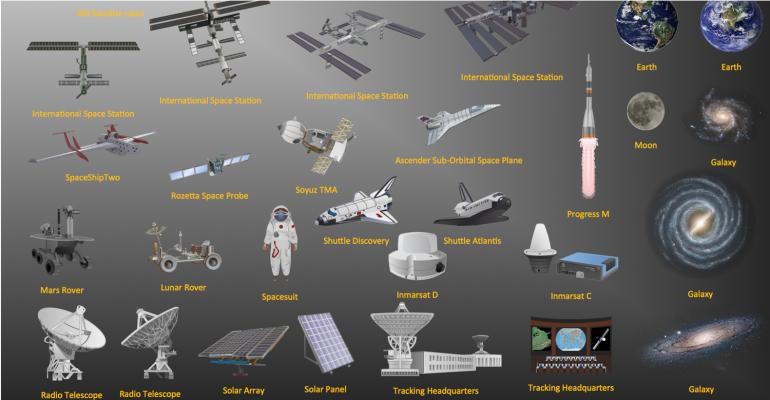
Overview. Digitalization enables a three-dimensional real life, real feel approach to the battlefield from a remote location. This will be feasible over multiple platforms through data fusion, Data fusion is enabled because one sphere of digitalization is growing with one other or more forms of digitalization in an organic manner. The multiplicative power and potential are huge. However, there are major inhibitors in our context. These are a) Lack of Awareness and Understanding b) Resources and Talent is Limited c) Indian Armed Forces Lack a Culture of Technology Absorption. d) Hindrance of Government Regulation e) Pace of Change is fast and f) Indian Unwillingness to Take Risk.
What Do We Do? We missed the Industrial Revolution. Are we missing the Digital Revolution? We will. The Digital Revolution is taking place in the IITs / NITS / Engineering Colleges of India as much as it is taking place in universities abroad. The problem is that our talent is being sucked out. We are going to that great position where a technology developed by one bright young kid in Chennai will be sold to Microsoft for a million and will be bought back by us for about 50 million. I see it happening when my students are being taken by foreign companies to develop these very technologies. Our private defense industry with its bania attitude does not know to invest in the future. Our Government and Military Establishment is a step ahead in its ignorance and two steps ahead in its attitudinal denseness.
Finale. I do hope I have got under some one’s collar and ignited some spark in a thinking mind. The real challenge for us is – the talent is here in our youngsters. Are we, of the older generation, wise enough to tap it? For a very Indian reason, I am pessimistic. Prove me wrong!








